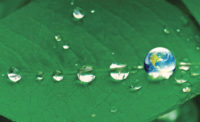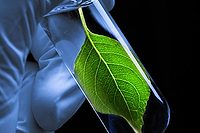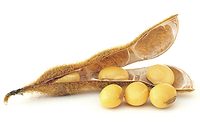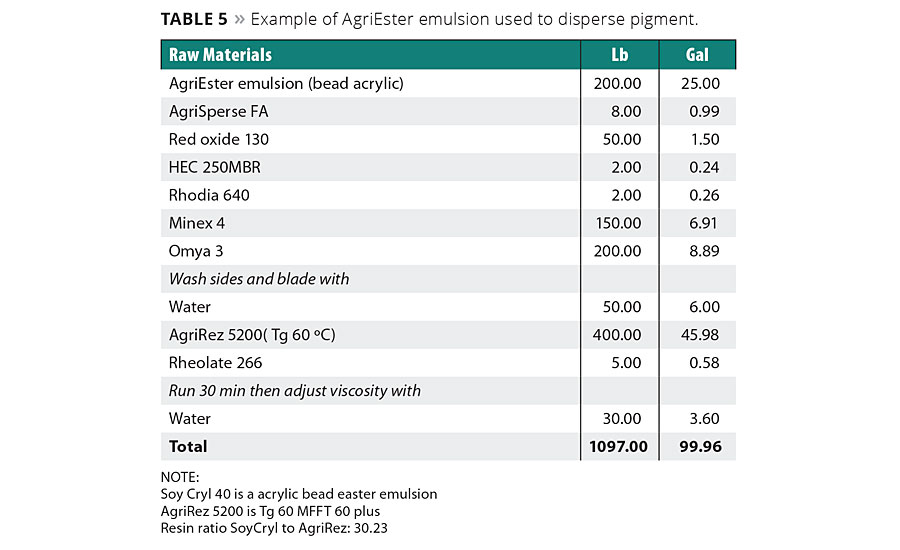Biobased Emulsion
Sustainable, Renewable and Educational
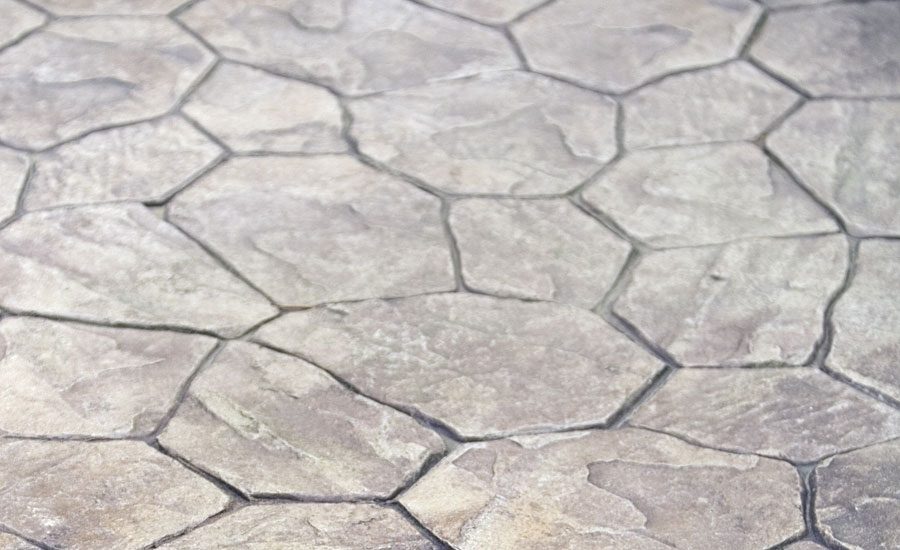
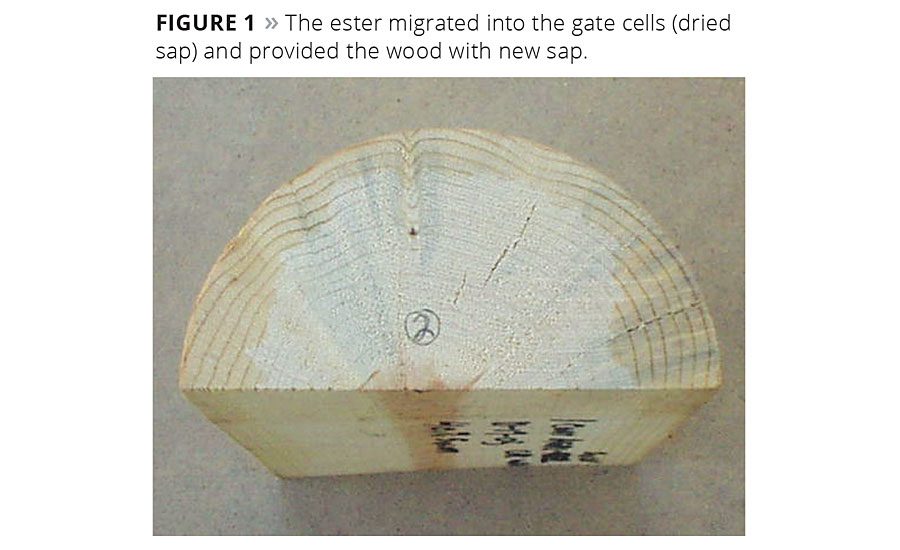
Figure 1

Table 1
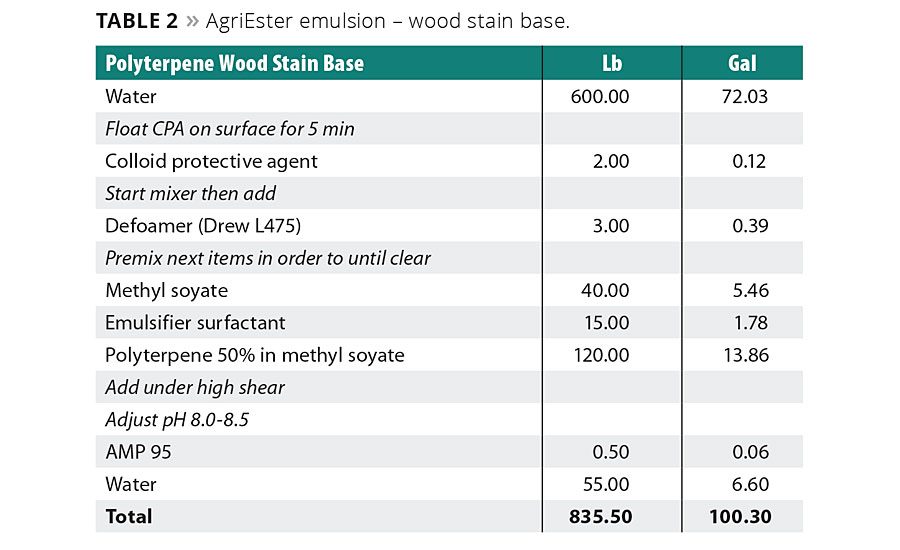
Table 2

Table 3

Table 4

Table 5







For over two decades, coatings formulators have had to comply with new VOC (volatile organic compound) regulations with limited options to meet these demands. New resin development has been costly, and still the perfect resin system hasn’t been achieved. AgriEsters (methyl soyate, palm and coconut esters) are a new, low-cost alternative that can help emulsify old solvent-based resins (bead acrylics, oil-based alkyds and polyterpenes), giving formulators new alternatives. These emulsions are fully sustainable, as they are primarily made from renewable resources. This new class of biobased emulsions has provided educational benefits that will help formulators regain that competitive edge.
The New Uses Committee of the United Soybean Board met in 1997 to review technical options for increasing the use of soybeans for industrial applications. Industry professionals from over 10 markets, including lubrication, inks, coatings, fuel additives and cleaners, attended the meeting. The results yielded the discovery that methyl soyate had many properties that the above-mentioned markets could all pursue as a raw material base. The obvious categories were lubrication (metal cutting fluids, crank case oil), cleaners (paint strippers, degreasers) and fuels (bio diesel being the most notable), and were clear path winners. Coatings and inks were questionable because methyl soyate doesn’t evaporate (essentially zero VOCs), and the negative was the potential to leave greasy films (like vegetable oil).
New Century Coatings (NCC) took on the challenge to investigate methyl soyate as a raw material to be used in coatings. In 2001, NCC was awarded a patent for preparing emulsions that contained soy esters and other nonaqueous materials. By using methyl soyate to dissolve or cut the viscosity of traditional solvent resins like alkyds, solid acrylics and polyterpenes, new emulsions were produced. These emulsions were first investigated as stain vehicles that were applied to concrete, wood and eventually all porous surfaces.
A basic scientific principle is absorption as a method of drying. The more absorbent or porous the surface, the more the applied liquid will penetrate into the substrate (essentially like a sponge). Careful examination of how motor oils and brake fluids stain concrete forged the idea of providing the market with more permanent concrete stains (true stains not diluted paints).
Concrete Stain
The first generation of concrete stains used a 4% medium-oil alkyd (no driers), 14% methyl soyate, 2% surfactant and 80% water (Table 1). Some would say applying an alkyd ester emulsion to concrete that has a very high alkalinity would lead to saponification. If this were a true statement, what would that failure mechanism look like? Because methyl soyate penetrates like motor oil (a vegetable oil alternative) and the alkyd was used primarily to be a tackifier to the stone and sand, then no films are being formed. Since there was no film formation, there would be no chipping or peeling failure observed.
Colorants – Zero-VOC, Ester Dispersion, No Water
Coloring this stain was the most difficult challenge because commercial colorants have too much surfactant and don’t participate in the ester penetration. As the ester is absorbed over time, the commercial colorants are left at the surface. These colorants were then tacky due to over-plasticized acrylic resin from the colorant, or vulnerable to being washed away (high surfactant, no stabilizing resin to seal the pigment to the surface). The discovery was that the colorants had to be more compatible with the ester to facilitate color penetration. To address this issue, new colorants were formulated using the methyl soyate to disperse the pigment and stabilized with 70% medium-oil alkyd in soy ester. This dispersion paste was then made water miscible, but not totally water soluble. Once the water was evaporated the stain was totally back in the oil phase, similar to the motor oil stain. These stain products were tested in the market for over three years as AgriStain® and eventually commercialized by ECO Safety Products under the SoyCrete brand. This turned out to be a magical advantage for contractors. They were able to stain with multiple colors and strip the stain in the initial 24-hr phase should the project not be acceptable to the customer. With the use of a commercial scrubbing machine, soap and water, the stain could be removed for a fresh start. This was a huge advantage over acrylic emulsion stains that dried fast and formed films.
Wood Stains
The approach regarding wood stains was to mirror the solvent-based wood stain. The standard solvent wood stain is less than 15% solids and consists of 80% mineral spirits, 15% alkyd and 5% or less pigment dispersion for color. Soy ester has a Kauri butanol value of 53, which mirrors that of mineral spirits. When the mineral spirits was replaced with methyl soyate, the new AgriEster emulsion with alkyd looked similar in composition to the traditional wood stain. The initial stain base used for evaluation was the concrete stain base.
In a lab evaluation of the staining application, an amazing discovery was made. The ester stain was wicking into or around the wood surface and appeared to be down 1/8 of an inch on the edges of the cherry wood in less than an hour. What was discovered in another experiment, by coating the outside of a 4-inch-diameter nontreated cedar post and exposing it to the sun, is that the ester had migrated into the gate cells (dried sap) and provided the wood with new sap. This phenomenon had never been observed. The current technology for gaining penetration is to use nanoparticle-size acrylic emulsions. To confirm this penetration requires expensive analytical equipment. With the ester penetration, visual observation is all that is needed to validate (Figure 1).
The current commercial water-based stains on the market for wood are again diluted paints masking themselves as stains. AgriEster emulsions may not be ready for fine furniture on a production line due to the slow penetration. Wood stains made from AgriEster emulsions have found success with DIY customers for decks, siding, cabinets and antique furniture.
Lab and Field Testing
As the sales of SoyCrete and TimberSoy (trademarks of Eco Safety Products) grew, more paint labs around the country began testing these new methyl soyate-derived emulsions for concrete and wood stains. Their lab results were less than they expected, and they were eventually dismissed as poor performance of film formation. The lack of understanding and the movement of the industry toward diluted paints rather than true stains have changed the definition of a stain potentially forever. Film formation of a stain now requires early water resistance (24-hr water spot test, after which the water is wiped from the surface), which is not a feature that the consumer would be interested in, but a means to validate the products. The exposure to the sun is an effective way to achieve absorption of the methyl soyate emulsions and allows more of the water to be evaporated from the wood surface. Real-life exposures have shown the more sun and sequent heating of the surface facilitates faster water beading. Whether wood or concrete, absorption takes time to truly penetrate a porous surface.
Field exposures on decks, exterior wood beams, siding and concrete that are now eight years old still have not been restained in both high desert (four season climates in Arizona, Nevada, Utah, Colorado) and southern exposures from Florida to Texas. Using alkyd ester emulsions in the harsh winters of the Midwest was unacceptable, but three-year exposures are proving to be better with some new AgriEster emulsions based on polyterpene (melt temperature 135 °C) for wood (Table 2) and bead acrylic for concrete (Table 3).
Topcoat Compatibility
The next phase was protecting the stains with a sealer. A true stain has limited resin content, similar to solvent stains for wood or acid stains for concrete. This low resin content doesn’t protect the stain from UV rays or abrasion. So the question to ponder was, “would solvent- or water-based sealers work and adhere to the ester stain (felt to be too oily)?” With concrete being more absorbent than wood, it was a surprise to find that adhesion was excellent for both water and solvent topcoats. The sealing of wood stains required longer dry times before applying a sealer as the consequence of slower absorption. Let it be noted that exterior wood stains don’t necessarily have to be sealed. It is best not to seal the stain to the wood, as it creates film failures that then require the film to be stripped from the deck or siding. Sealing of wood should be primarily reserved for indoor applications.
The approach to the adhesion problem for wood was to use an old saying: “that likes like likes”. Perhaps if the sealer were more like the stain in composition, it would migrate to the stain and improve the adhesion.
Using high-Tg acrylic emulsions (40-60 °C Tg), the lab investigated whether these new methyl soyate emulsions would plasticize the acrylic emulsion. The result was they not only plasticized the acrylic emulsion, but also the films were similar to the petrochemical version of the sealer (also more hydrophobic). These films were also nongreasy and clear. The ester did plasticize the acrylic emulsion at the same 30-35% coalescing solvent used in the petrochemical formulations. These new sealers were essentially zero VOC and contained 30% biobased content that was renewable and sustainable.
Interior and Exterior Paint
Using AgriEster emulsions in paint provides options for the formulator. The simple option is to add the AgriEster emulsion to an acrylic emulsion (Tg 60-70 °C), providing a new vehicle to letdown a standard pigment dispersion in water (Table 4). The second, more exciting, option is to disperse the pigment in the AgriEster emulsion and use the heat of the dispersion to help plasticize the acrylic emulsion during manufacturing (Table 5). This reduces the intermediate step of preparing a new resin as described in Option 1, which requires a second tank. The dispersion process can be done with several varieties of AgriEster emulsions. These include polyterpene, bead acrylic, hydrocarbon, epoxy and alkyds. Dispersing in these emulsions can protect the pigment from UV, reduce staining of the pigment and ultimately provide a more stable dispersion. Formulators will have new options rather than the standard water, surfactant and pigment dispersions.
Unique Benefits
With a grant from the United Soybean Board, NCC was able to investigate the effect of AgriEster emulsions to prevent mildew and mold growth. Samples were prepared for testing on wood (pine) using an emulsion of medium-oil alkyd. The results (Control Mold and Sapstain Fungi in Lumber – Evaluation by Two Test Methods) indicated that the AgriEster emulsions were inhibiting mildew and mold growth, but over time would be absorbed into the wood, thus no longer being present at the surface. The time frame could not be determined as it varies with the wood species. The other variable would be the amount of sunlight the stain was exposed to after application.
During the process of developing the paints it was realized that for over seven years the stains contained no biocides or in-can preservative. If the stains showed some resistance to mildew and mold, why is it necessary to use a biocide? Perhaps the answer is simpler than we think. Remember the Kb value of soy ester is similar to mineral spirits. With that much ester (30-40% on resin solids) is that not similar to our industrial water-based coating made with the same amount of petrochemicals? Those products were not formulated with in-can preservatives.
Some commercial stains have packaging labels designating “Danger – contains glycols”. With AgriEster emulsions substituting for the flow and leveling of the coating, providing wet edge, improving lapping issues and reducing petrochemical consumption, the eco-friendly aspect is enhanced. Biobased labeling under the USDA program is available, as these products were some of the first approved when the program began. Potential elimination of preservatives, mildew and mold additives are an option for future paints and coatings.
The future of methyl soyate as a solvent might include modification to raise the Kb values, allowing other solvent-based resins to be dissolved and emulsified (CAB, shellac, more solid acrylic resins). Esters might be developed to have potential reactive sites that would tie into the resin system to improve performance.
It should be noted that esters from palm and coconut have been used in pharmaceuticals and cosmetics for decades, yet not been evaluated in coatings. The cost is higher, but some of the benefits have shown to have other unique properties.
Conclusion
It is time to let our imagination lead our coatings development, not our financial books. We need to expand the product development process to include the environment that these coatings are subjected to, not just the lab standards. The sun can be part of the curing process (UV rays and heat), so we need to keep some options available. We need to be more aware of the substrate the customer is applying these coatings to. Morest charts, castings of concrete, fresh wood and vinyl sheets make for easy lab testing, but they can give false signals for future coating development. Our development work needs more real-world substrate evaluations, so we don’t miss opportunities. One resin can’t fulfil all the requirements, so we need more options for blending. Bead acrylic resins, polyterpenes, hydrocarbons and CAB resin have never been adapted for water-based coatings. We have no idea what is in store for the future performances of these new formulated products.
Author’s Note:
The author would like to thank Professor Virginia Simmon, Gale Murphy, Ralph and Gail Fisel for their support. For more information, contact ncc@cox.net.
Looking for a reprint of this article?
From high-res PDFs to custom plaques, order your copy today!




